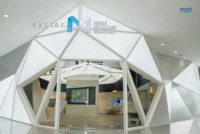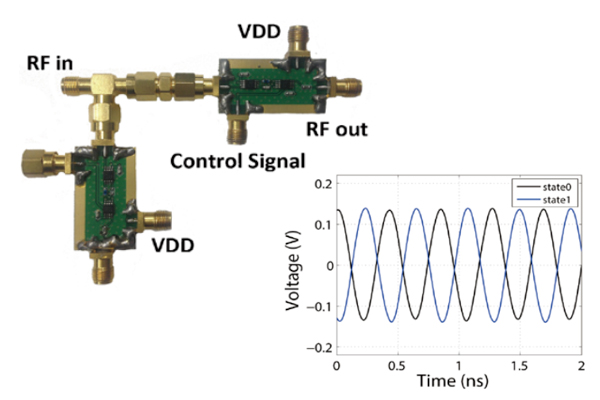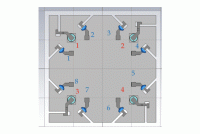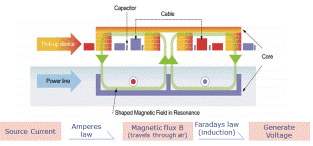
The emergence of eco-friendly and highly-efficient public transportation technology has highlighted the problems associated with the use of fossil fuels (pollution, price, and depletion).
The use of battery-powered electric vehicles is restrained by their limited driving range, the high price of the battery packs, and the inconvenience of charging. There is a need for wireless charging technology for electric vehicles in order to reduce battery size and make them more efficient to power.
Researchers at KAIST, led by Professor Dong-Ho Cho in the Wireless Power Transfer Technology Research Center at the KAIST Institute, tackled this problem by developing a SMFIR (Shaped Magnetic Field in Resonance) technique. The SMFIR technique safely delivers high amounts of energy to an electric vehicle while it is stationary or in motion.
KAIST is leading the field for developing wireless power-transfer technology for electric buses with only 17cm of surface clearance required and 80% efficiency in 2009. Current wireless electric-vehicle technology has an air gap requirement of 20cm and power transfer efficiency for commercial service (air gap of 20cm, power transfer efficiency 75% average).
KAIST’s wireless-charging electric bus technology was selected as one of the World’s Top 10 Emerging Technologies of 2013 at the World Economic Forum and one of the World’s Best Inventions of 2012 by the American weekly news magazine, Time.

KAIST’s wireless-charging electric bus system is being used at Seoul Grand Park (March 2010), Yeosu Expo (August 2012), KAIST shuttle bus (October 2012) and Gumi City (August 2013.) The OLEV bus was launched commercially in Gumi on March 25, 2014.
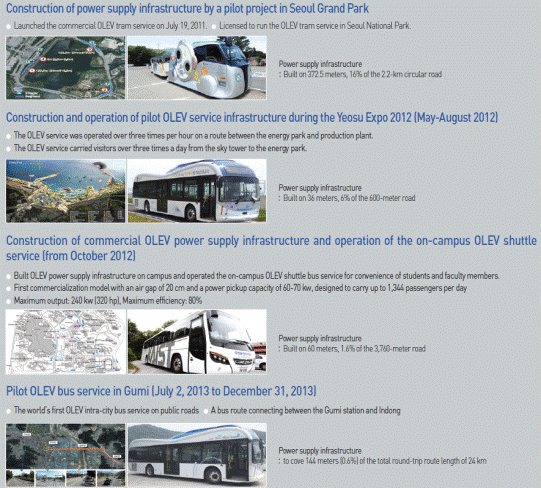
The technological achievements of the OLEV bus will create positive ripple effects when applied to cars, BRTs, railroad systems, and other wireless-power transmission systems.






